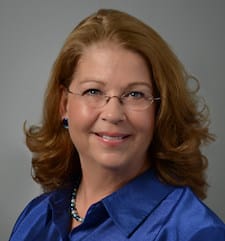
By Gigi Sorenson, RN, MSN
Opioids kill more people than car crashes, AIDS or gun violence. Every 25 minutes a baby is born suffering from opioid withdrawal. The U.S. is paying a price tag of $78.5 billion a year, according to the Centers for Disease Control and Prevention.
So why is the opioid epidemic so out of control?
One of the biggest barriers is the lack of treatment options in many parts of the U.S. – which is where telemedicine can reach addicts who otherwise wouldn’t receive help.
The Scarcity of Substance Abuse Treatment
Between 1999 and 2015, overdose deaths increased 325 percent in rural counties. Yet the majority of OUD treatment centers are located in more populous areas. A rural patient who decides to seek help often finds none is available within a hundred miles or more.
Rural communities also lack clinicians able to provide medication-assisted treatment (MAT), which can reduce the risk of death by nearly 50 percent. Considered an essential component of effective treatment, MAT treatment can involve methadone, naltrexone or buprenorphine – which means providers must be licensed accordingly. With 88.6 percent of rural counties lacking adequate MAT treatment centers, patients must be able to organize and afford the travel for treatment – something out of many users’ reach.
To overcome these barriers, many providers and industry leaders are turning to technology. Some physicians deliver timed doses of pain medication through wearable medical devices that stop the patient from abusing or overdosing on drugs; Amazon’s digital assistant Alexa can now answer questions about opioid abuse and addiction and even tell users how to seek treatment. But the biggest changes are undoubtedly happening through telemedicine. From rehab centers to methadone clinics to private practices, providers are virtually connecting addicts to treatment no matter where they are located. Even the Centers for Medicare & Medicaid Services (CMS) has started reimbursing telemedicine for treatment of opioid use disorders, services that include overall management, care coordination, psychotherapy and substance use counseling.
Putting Addiction Experts in Every Community
To make OUD treatment local, effective and accessible, providers are offering a new virtual path to recovery in three ways:
1. Faster and Smarter Collaboration
When OUD patients overdose or experience severe withdrawal symptoms, immediate intervention is critical. Through telemedicine, local providers can dial up an OUD expert when an addict is in distress in a rural jail cell, college campus or other locale without a trained specialist nearby. That collaboration works in the other direction, too. When an addict is in inpatient treatment, facility professionals can consult with primary care providers, social workers and therapists to exchange insights into the patient’s challenges, while patients can virtually involve family members in group counseling.
Remote collaboration can also provide the multidisciplinary approach required for successful recovery. Half of people with OUD have other mental illnesses. Many addicts also have higher rates of heart disease, diabetes, tobacco use and infectious diseases – conditions which likely have gone untreated during the worst of their addiction.
2. Home Care and Relapse Avoidance
Bringing connected care to the patient’s home plays a strong role in OUD treatment. While addicts wait for a rehab bed to open up, they can receive counseling at home – keeping them motivated to work toward recovery. Home therapy sessions can also be attractive to small town patients worried about being spotted walking into the local behavioral clinic. Counselors can check in with patients recently released from detox or rehab, ask about any recent cravings and recommend environmental changes. Patients can also connect to virtual support groups to help them maintain lifestyle modifications and build positive peer relationships.
3. MAT Access
While considered the gold standard for treating substance use disorder, 29.8 percent of rural Americans live in a county without a licensed buprenorphine provider, compared with only 2.2 percent of urban Americans. The U.S. Department of Health and Human Services (HHS) is working with the Drug Enforcement Administration (DEA) to help more clinicians expand access to buprenorphine-based MAT; legislators have also created the bipartisan Mainstreaming Addiction Treatment Act, which would allow doctors and physicians to prescribe buprenorphine for addiction without going through a laborious waiver approval process. The bill also contains a provision that would allow providers to dispense a narcotic drug in schedule III, IV, or V, such as buprenorphine, for MAT through telemedicine.
Stemming the Crisis
Telehealth has already transformed healthcare outcomes across other disciplines, such as chronic disease management, stroke care and dermatology. It’s time to apply virtual care to one of the deadliest epidemics of our time and empower the healthcare industry with new options for treatment and recovery.
About the author
Gigi Sorenson, RN, MSN, is Chief Clinical Officer and Vice President of Operations for GlobalMed, an international provider of virtual care solutions. With over 25 million consults delivered in 60 countries and specializing in both federal and commercial spaces, GlobalMed’s telemedicine platform is used worldwide from the Department of Veteran Affairs and White House Medical Unit to rural hospitals, and villages in Africa.
The Editorial Team at Healthcare Business Today is made up of skilled healthcare writers and experts, led by our managing editor, Daniel Casciato, who has over 25 years of experience in healthcare writing. Since 1998, we have produced compelling and informative content for numerous publications, establishing ourselves as a trusted resource for health and wellness information. We offer readers access to fresh health, medicine, science, and technology developments and the latest in patient news, emphasizing how these developments affect our lives.








